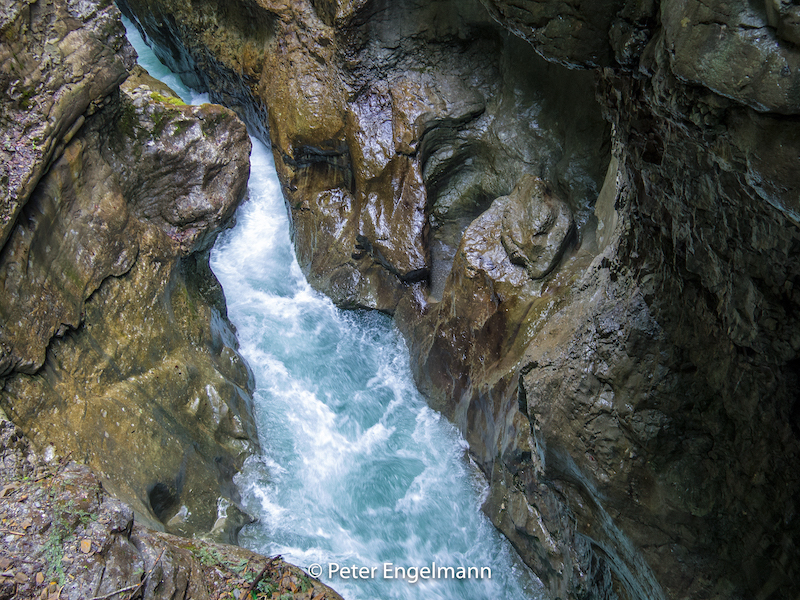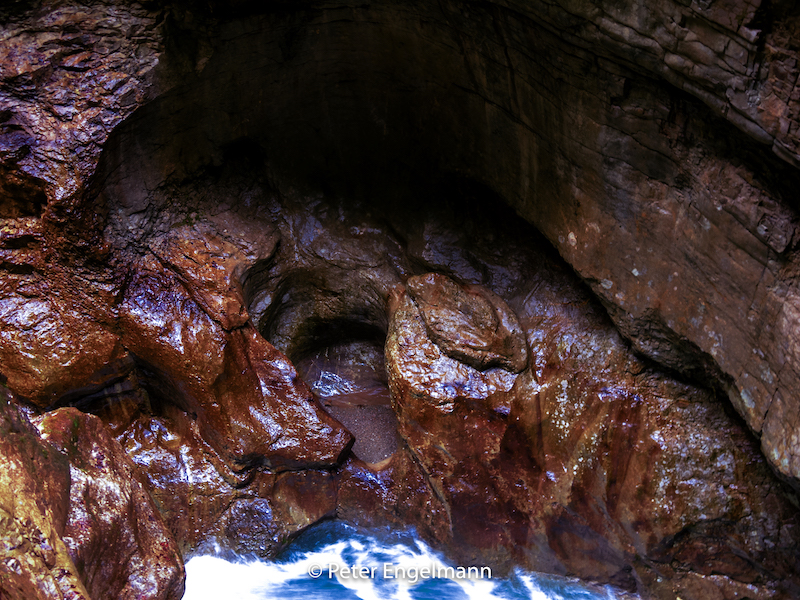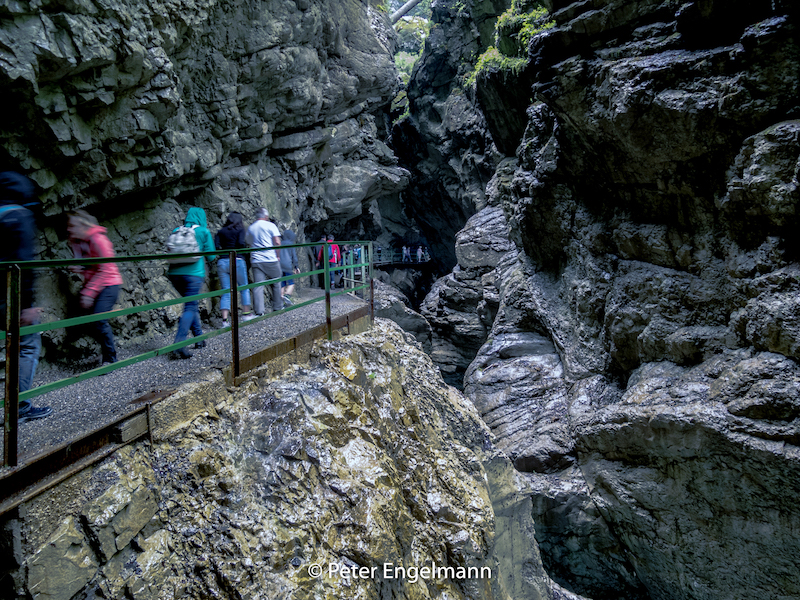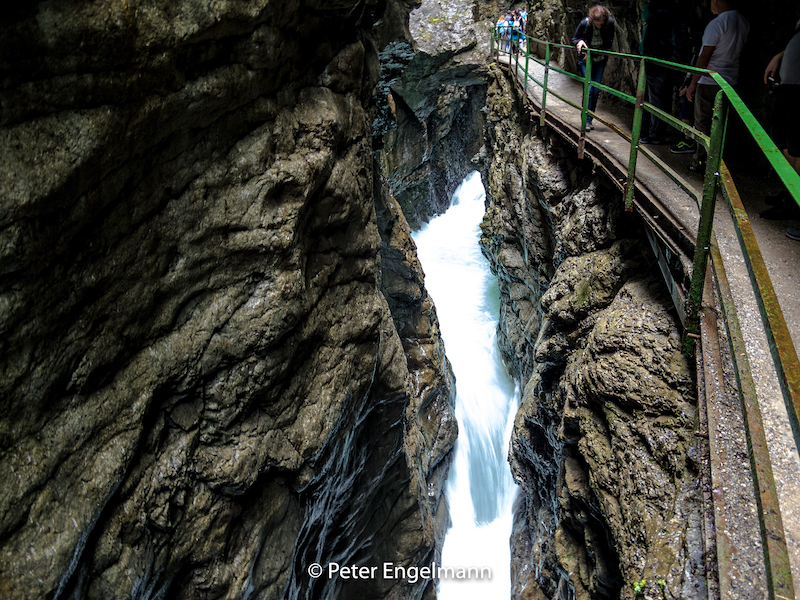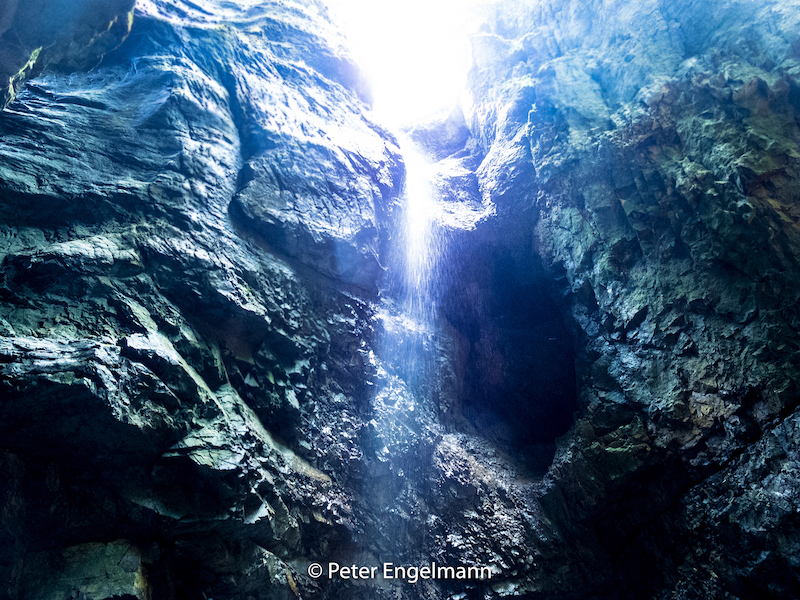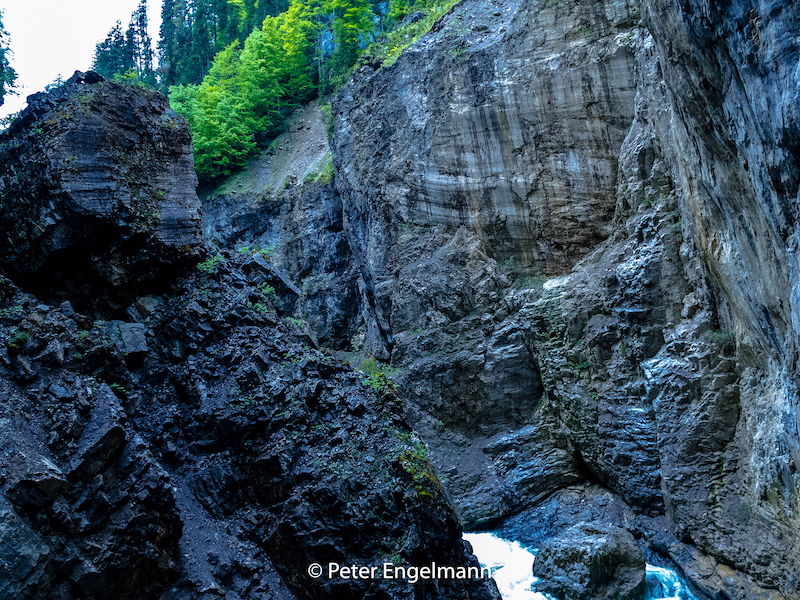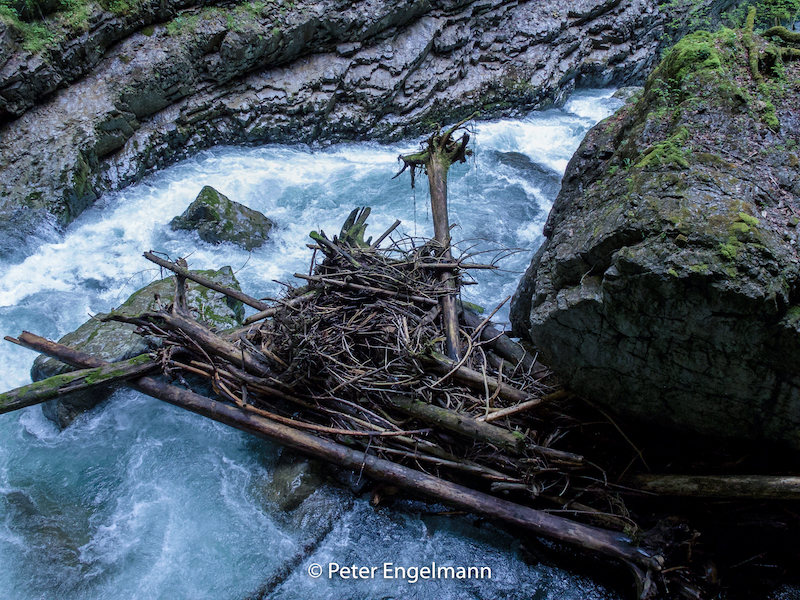Breitachklamm Gorge, Germany/Austria – May 27, 2017
Wild nature in a fascinating way – this is the Breitachklamm near Oberstdorf, Bavaria, in the Allgäu mountains: A winding river through a wide gorge. Situated in the lovely Kleinwalsertal this is the deepest canyon in Central Europe.
Thanks to a tremendous effort of volunteers tourists can experience this wonder of nature not far from civilization. After early explorations in the late 19th century a village priest, Johannes Schiebel started the project of a path in the canyon in 1904-05. It was a courageous thing to do in the wild gorge which has a length of 2,8 kilometers and which was feared in earlier times as “Hell Canyon”.
Today it has become easily accessible with a huge parking space and a frequent bus connection between the main station in Oberstdorf and the entry building where you can buy your tickets. During summer its recommended to arrive early or to use the bus since a lot of people are coming.
The gorge is also very interesting for anybody who is interested in weather and climate. In these mountains, there is a distinct micro-climate with a lot of rain over the year. Not far from the Breitachklamm is Balderschwang, which is a record keeper in annual rainfall.
On the other side, the climate appears to be moderate, and there is an excellent air quality.
 Moos on trees shows that there is no pollution and a wet climate.
Moos on trees shows that there is no pollution and a wet climate.
There is an incredible variety of the vegetation. Nevertheless, its surprising how many plants grew in the extreme conditions of the gorge. Shortly after the entry, there is a “vertical forest” before the canyon becomes more and more narrow. 
The gorge is a product of the last ice age. The river carved its own bed deep into the hard dolomite rock. Even there are many tourists and the path is strongly secured you feel a bit intimidated when the rock walls become narrower and narrower. Here we always will be temporary guests. Nature rules. This is how explorers must feel if they enter an unknown world.
Huge chunks of rock are lying around. In spring a lot of water runs through the gorge and huge trees are left there. In 1995 a landslide happened and a mass of rocks came down and blocked the river. It ended in a huge flood. The path was destroyed and later restored. Floods after torrential rain or when the snow melts are always a potential danger for the path.
Of course, the gorge offers a lot for photographers and filmmakers. It’s also a great inspiration. Since there are a lot of visitors on weekends perhaps a rainy day or a visit in winter when water is transformed into giant ice sculptures could be interesting alternatives.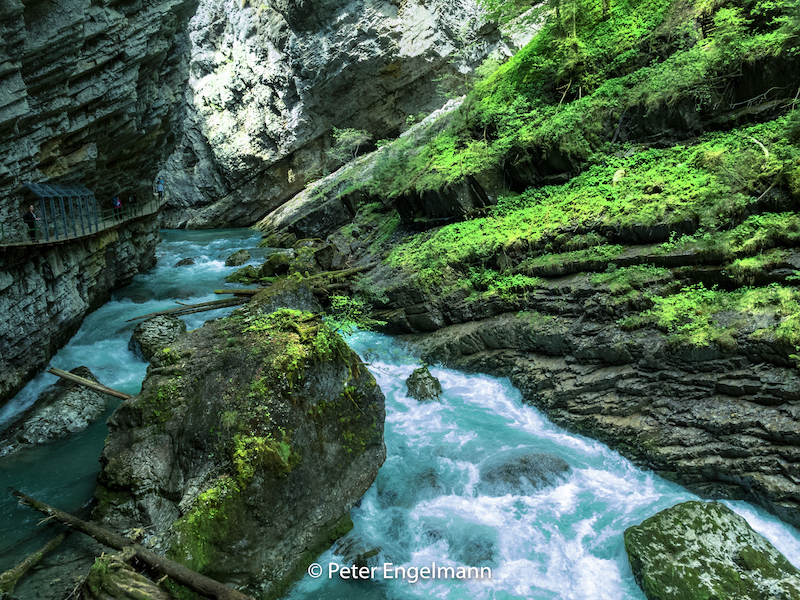
You should check before if the gorge is open for visitors since they need to close it for security reasons under certain conditions of weather: http://www.breitachklamm.com/
The visit of the Breitach gorge is also a good start for a bigger tour – there are many trails around which lead either back to the parking lot or another bus station or to many managed alms. At the end of the gorge, the valley is more open and you reach a lovely river bed with the mountains in the background. It looks a bit like the Rocky Mountains in a typical western setting.

